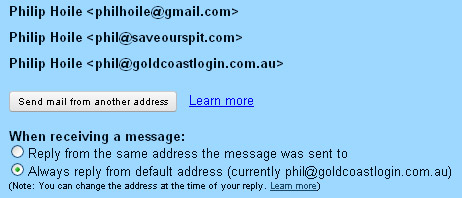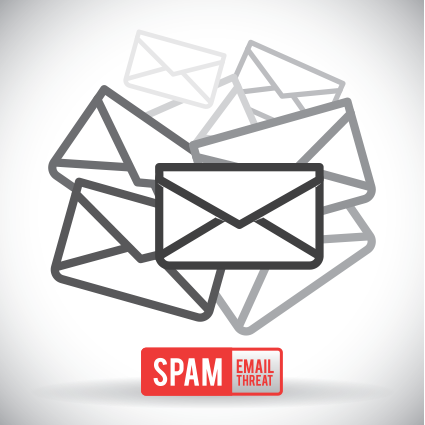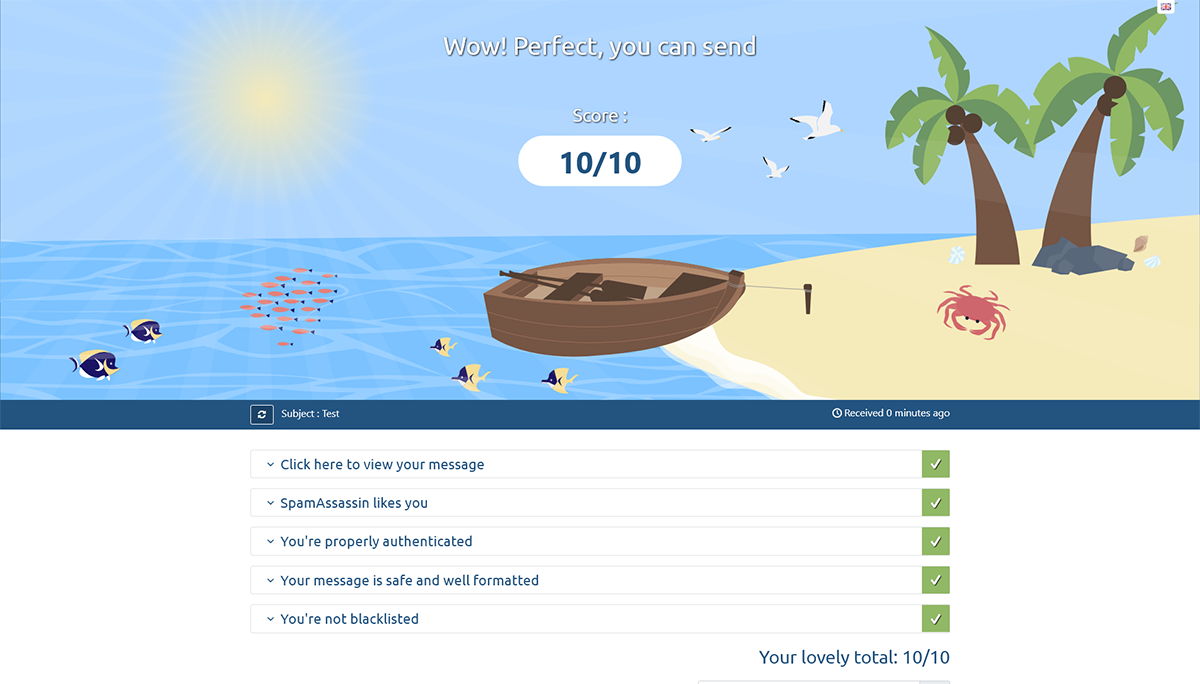SEO
- $395 NOT
- $240 ask us how
Developing effective email strategies can really benefit your business. You need to know the difference between an email alias, POP3 etc just so your email actually arrives reliably.
If you are using email forms on your website - they need to enhance and add value to the conversation.
When building a subscriber list I prefer one built and sent from your website, its far more professional than a 3rd party email system. Its your data, why not keep it on your own website.
Consider your email strategy and your SEO strategy and the overlaps this can create.
Save an hour per week just by following a few of these tips.

Consider whether an effective text message is appropriate. It will get the attention of the recipient. An email may not even be opened. However if you want your emails to be opened read on.
Format your outgoing e-mail so that it is readable by all e-mail programs
How to Format Your E-Mails for Optimum Readability (from Web Copy that sells Maria Veloso)
The readability of your e-mails is of utmost importance if your e-mails are to achieve their purpose of leading the prospect down the intended sales path. There's nothing worse than sending an e-mail with jagged, uneven lines (a long line, followed by a short line, then another long line followed by another short line, and so on). This occurs when your e-mail is in one format and your recipient's is in another.
To avoid this, you should format your outgoing e-mail so that it is readable by all e-mail programs. Set your line lengths to 60 characters (including spaces) per line so that the lines don't automatically wrap.
Web developers are familiar with responsive website design. Recent research indicating up to 42% of emails are read on a mobile device.
Mobile accounted for 42% of all email opens in 2019.
A responsive email design should be aimed at working on virtually any device. Some email clients strip away header content and style sheets. This makes email design a battle of the basics. Make your email work on most devices and become fluid on a mobile phone. We code our own email templates.
A good article showing the challenges of responsive emails details the code examples required to achieve this.
Writing email - what structure? from Business Writing Baden Eunson
The structuring or sequencing of information critically influences the effectiveness of these communications. In email, direct structuring, getting your message up front, is usually the most suitable approach. Consider using the MADE formula for structuring emails:
The MADE approach is direct - it begins with the core of the message, creating a context and rationale for action and problem solving.
In Griffith Univerity's write effective emails article they suggest to clearly state the response you are expecting. And we suggest if you are needing a response, make it stand out with a button (that affords clicking). A reader should be able to scan the email and easily know what response is required. Hence a good subject and a clear action.
With emails on a web server there can be issues due to various software and spam detectors on various platforms. For example if your web developer does not use their own servers the reputation of an email address can be affected by a suspect person on a shared server. Suddenly your emails are not getting through.
One solution is to take the email part off the web host and use Google Apps to manage the emails.
From a website perspective as long as the website can send emails as yourname@yoursite.com it does not matter where you manage emails.
The domain name can be setup to manage web hosting and emails separately.
Efficient email management is essential for any business. Choose your domain name carefully and consider where your site is hosted. Quality web hosting will allow you to create as many emails as your business needs with quality spam filters.
You can then setup what are called email aliases which are emails that actually look like "info@yourbusiness.com" but can be managed via your normal email ISP.
There are some benefits to this:-
My clients get email advice and changes free. Its part of my hosting packages designed to minimise time wasted on email management.
POP3 email accounts can also be set up. A POP3 email account is where your emails are stored on a server (e.g. yourbusiness.com) as opposed to an alias that simply forwards to your existing email eg. mike@bigpond.net.au. I like to have one POP3 email account where all mail goes to from various aliases. With one POP3 account you can check your email from your desktop or on your phone.
An email Identity is an email address you can send from, you may have one main email address and a number of Identities you can reply as.
If you have one reliable email account with various Identities you may have a number of emails that forward to that main address. Use filtering to setup rules and send certain emails to specific folders. Say there is are social media notifications that you may want to check occassionaly, they can be filtered into a specific folder.
If you use an email when you are away and only want important emails to display, filters can send less important stuff to the trash.

As mentioned above using one POP3 account allows you to check any email from your mobile phone. You may be waiting on a contract or important information and need to check your email whilst away. One technique (if your phone allows it) is to only download the header and leave it on the server. This allows you to check your emails - only download the content of an email you are interested in - perhaps even reply via your phone and still have the original email arrive in your desktop inbox.
The header of an email only contains the subject plus info about who sent it etc.
Some people regard email as more important than their website. You may have multiple domain names and email addresses. These can all be managed in one place for all the devices you use. Gmail can be used and even check on your POP3 emails for you. This can create one central repository for all of your emails. This strategy suits someone who is going to use GMail as their main email system.
As per below once you set up an account in Gmail go to the Settings<Accounts and Import menu and add new accounts.
 Using this scenario you could send emails from an iPad an iPhone a normal mobile phone and any computer in one organised place.
Using this scenario you could send emails from an iPad an iPhone a normal mobile phone and any computer in one organised place.
When an email is sent from Gmail from your selected account it is traceable in the header as to the chain of events that has occurred.
Gmail is also very accomplished at reducing spam and has some very useful features for customisation and managing documents.
Note New Gmail setup requires a valid SMTP server for sending emails as aliases.
This can be a valid SMTP server eg like your home provider (e.g Telstra). You will need a username and password.
This article sets out 2 ways of using Gmail in Outlook Express.
This can be very useful if you wanted to still send an email as you@yourdoamin.com but used Gmail instead of Telstra or other carrier.
Hence you can have a professional email address that forwards to a GMail account and is still accessible from your computer.
In most of the scenarios above we are using forwarded emails with one POP3 server. GMail also allows you to forward emails hence you could use one GMail account to perform many important tasks without visitors to your website being aware.
You could have 5 websites all forwarding emails to GMail with those emails being forwarded to your private ISP email.
Hence you can check all emails and reply as the business that is concerned.
There are now servers that discourage email forwarding.
Understanding how spammers work may help in preventing spam. My personal email receives about 5 spams a day which is not bad considering the number of sites my email is on. Avoid having your email anywhere where it can be read as a text form from the Internet. There are simple ways to avoid the automatic spam crawlers. Avoid handing over you email details to sites or people you do not trust - always have a disposable email address (eg. a gmail address) for suspect forms or people. Many organisations collect emails many with varying security - if there computers are compromised you may have your details taken.
Use a reliable virus buster.
A Dictionary Harvest Attack is a technique used by spammers in an attempt to find valid/existent e-mail addresses at a domain by using brute force. (Wikipedia). These are problematic because your site can be blacklisted due to too many emails being sent to unknown recipients. Many sites now verify emails before adding a user to their subscriber list, because spammers add fake email addresses using scripts.
Example 1: "Harry Smythe" <h223951@gmail.com>
Example 2: "Harry Smythe" <harrysmythe.cmu.edu.au@scammersite.com>
When setting spam filters check that you are filtering the correct email. If you are filtering the from address look at the email header and ensure you are adding the from address to your spam filter. Otherwise you will get the same spammer emails in the future.
Below are some of the reasons email from your domain or IP address may be regarded as spam

If you get an email return with Mail Delivery Subsystem read the email and see if it indicates where there was an issue. You can then address that issue via the site that classified the email as spam.
You must have consent from the person you send a marketing email. Under the Spam Act, it's up to you to prove that you have a person's consent.
1 complete a written form
2 complete an online form
3 over the phone
4 face to face
In some circumstances, you may infer that you have consent to send marketing messages if the recipient has knowingly and directly given their address and it is reasonable to believe they would expect to receive marketing from your business.
POP3 downloads emails from a server to a single computer, making those emails only accessible on that specific computer. If you have one main PC you work from sending your sent folder to other devices may not make sense, so choose POP3.
IMAP stores emails on a server and then syncs them across multiple devices. IMAP is more advanced than POP3 and allows you to access your email from anywhere, and on any device.
For smaller email accounts with less activity an IMAP account may be ideal. Anything sent from any device is stored in the sent folder of all devices. If you routinely use multiple devices for email use IMAP.
Avoid form emails on your site unless they add value. I believe in having your actual email address available in a spam protected way.
This is my personal opinion - if you want someone to communicate with you making them fill in a form on your site as the only option may not work for everyone.
 Complicated number reading capture style forms are a deterrent for people sending an email.
Complicated number reading capture style forms are a deterrent for people sending an email.
However forms are a good way for some busy people to make contact. They will judge you on your response. Many people use forms where they wish to make contact but not be sold to over the phone. Or they may not be in a work situation that allows them to have a private conversation but may be able to submit a form and check the responses later when at home.
When sending emails that contain graphics or are html emails ensure that the images contain the full path from the server.
For example www.yourbusiness.com/images/Logo.jpg instead of what is called a relative path or embedded in the email.
This allows the email client to give an option to the recipient to whether they wish to download the image content of your email and save them unnecessarily waiting for images to download on an email they are not interested in.
When adding an attachment to an email a mental model of where that attachment is stored will put you ahead of many people. Your computer stores files in directories, however this is an abstract concept because everything is stored on a device like a hard drive. In short spend some time understanding where files and directories are stored on your system.
Email Systems will often keep a copy of the attachment that has been sent. This will be stored in a different location than the original. That means you can retrieve an email and the attachment you sent even if that attachment has later changed in the original.
For some businesses their website runs a poor second to the value of having reliable email. Quite often I would recommend to my clients that they use their ISP as a main email - however this can have issues as well.
If using a hosting account your email can be separate from that account and can be setup to be on a different server than your website host. In doing this you do not have to worry about the integrity of your host in managing your emails.
In some cases I recommend my clients to setup either a self managed server or a business email account with a reliable mob e.g. Netregistry have a business email package for only $110 per year - with all the backup and reliability you need with phone help if need be.
A DNS (Domain NameServer) record (also known as a zone file) is a small set of instructions for resolving specified Internet domain names to the appropriate number form of an Internet Protocol address (an IP address).
Each domain needs to have a DNS record on the machine controlling the IP address on which a domain is hosted (nameserver). The company hosting your domain may or may not be hosting your website.
Sometimes DNS is managed by your domain name provider and it can alternatively be managed by the hosting server. Either is fine as long as there is appropriate secure access.
A DNS record is basically a list of directions for where to send the web user. The three main types of requests from the user are:
DKIM is an email authentication technique that ensures email content is kept safe from tampering, using an encrypted digital signature.
DKIM stands for Domain Keys Identified Mail, which is an email authentication method. This method is used to detect spoofed, or fake sender email addresses.
SPF information is entered into a TXT record to define the mail servers authorized to send email for a domain.
SPF stands for Sender Policy Framework and is an email authentication technology used in email delivery and email security.
The owner of a domain can identify exactly which mail servers they are able to send from with SPF protocols. We set these in the DNS with specific TXT records.
A DMARC record is the record where the DMARC rulesets are defined. This record informs the ISPs (like Gmail, Microsoft, Yahoo! etc.) if a domain is set up to use DMARC. The DMARC record contains the policy. The DMARC record should be placed in your DNS. The TXT record name should be "_dmarc.yourdomain.com." where "yourdomain.com" is replaced with your actual domain name (or subdomain).
DMARC stands for Domain-based Message Authentication, Reporting, and Conformance. It is a relatively new email authentication protocol that protects your domain from unauthorized use, also known as email spoofing. DMARC is very effective for organizations because it uses both DKIM and SPF records to validate the sender of an email.
New rules for Gmail and Yahoo 2024
On October 3, 2023, Google and Yahoo announced requirements that bulk senders must have DMARC in place beginning February 2024.
If you send 5,000 messages a day or more into either of the world's largest mailbox providers, starting February 2024, your email domain must have a DMARC policy in your DNS.
Use this dmarc inspector to check your domain DMARC record.
A reverse DNS lookup is a DNS query for the domain name associated with a given IP address.
Reverse lookups are commonly used by email servers. Email servers check and see if an email message came from a valid server before bringing it onto their network.
Some hosts state if you have an SPF in your DNS there is no need for a Reverse DNS entry.
Mail servers send and receive email messages on the Internet.
MX (Mail Exchanger) records specify and prioritize the incoming mail servers that receive email messages sent to your domain name.

Professor Alex Edmans, has some useful time management suggestions. One for managing emails is to batch process all emails with the word "unsubscribe" in them.
Using a filter like the image above you could easily dispense with many emails taking up your attention in the inbox.
This does not delete those emails, but it does move them out of your email list and place them in a seperate location (eg a folder you created specifically for this). You could do the same for YouTube or Facebook emails. (as above does)
Another interesting approach by Professor Alex Edmans is to leave urgent tasks to the end of the day and concentrate on important tasks.
You can delete 5,000 emails in 20 minutes, risk free (relatively). Simply filter the emails by those unread. Use the sender box to filter again by senders eg YouTube sending notifications. Repeat the process with various bulk mail out websites like Facebook, retail outlets etc. The strategy is to delete unread emails in bulk without losing valuable read emails you wish to retain.
A tool for testing emails is mail tester. This tool gives you a specific email address to send to so that you can test your email. You can test 3 emails per day for free.
Testing your email campaigns and getting feedback in terms of a score is helpful, you can test whether product A works better than product B. We have our own bulk email system running from our private servers, that also scores 10/10 on emails sent from code. Even our alias emails seem to score well.

Email marketing remains a great marketing tool. Doing it well in 2023 requires the technical details to be right so your email is not going to end up in a spam box, your domain blacklisted or used as a spammers paradise.
Anything more advanced than your message has been received may require getting some sort of authentication setup.
What if you could do all this with your existing website and not need an external entity to do it for you? Just your web developer to link everything together and send the email for you too if necessary? That is the thinking behind our email marketing tool.
Email Marketing Tool for WebsiteHaving analysed many email campaign software systems, it may be useful to describe some of the features and issues.
Gmail and Outlook are not designed to send bulk emails in an email campaign. Special software can be used for this.
If you wanted to test whether a certain subject line or sending times had a better open rate you could use A/B testing to do so.
Having a large list of email addresses that are not responsive or outright bounce (no longer active) can damage your reputation as a sender of email. Bounce means it bounced back to you. This can happen via an auto responder for when a person is on holidays. Fake non existent emails can be added to your subscriber list by the myriads of spammy scripts out there.
Some email marketing software also includes forms and landing pages, even websites.
My preferred setup is to use both Thunderbird and a webmail system. I use Thunderbird to detect the spam and automatically delete it from the server. I can set the junk detection from a number of known identifiers like Spam Assassin.
The benefit of this system is I can always use webmail if I am away from my desk. I can also detect and delete emails using Thunderbird from my desktop and never have to scroll through pages of emails through webmail and try to delete them there. So the outcome is I can check emails from anywhere, but do my organising from my desktop.
Philip Hoile has lectured at Griffith University in e-business, advanced e-business, e-commerce and User Interface Design. A web developer since 1996 specialising in programming website Content Management Systems.
My interest in web marketing stems from a desire to improve client outcomes.
A Gold Coast SEO and Web Developer